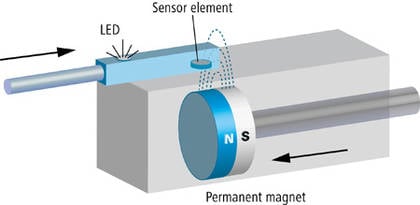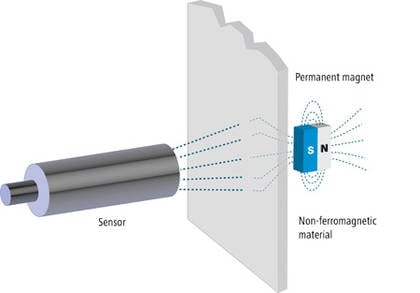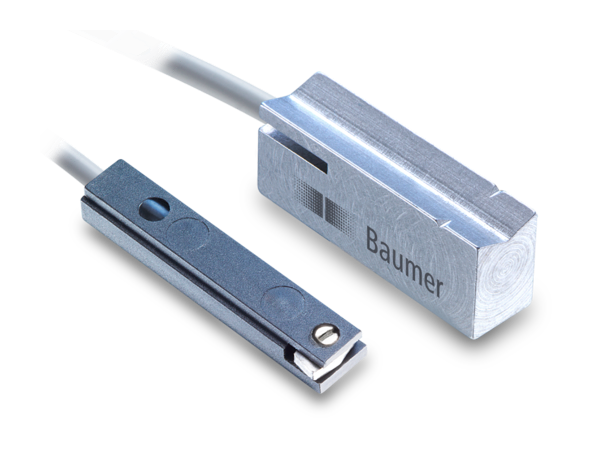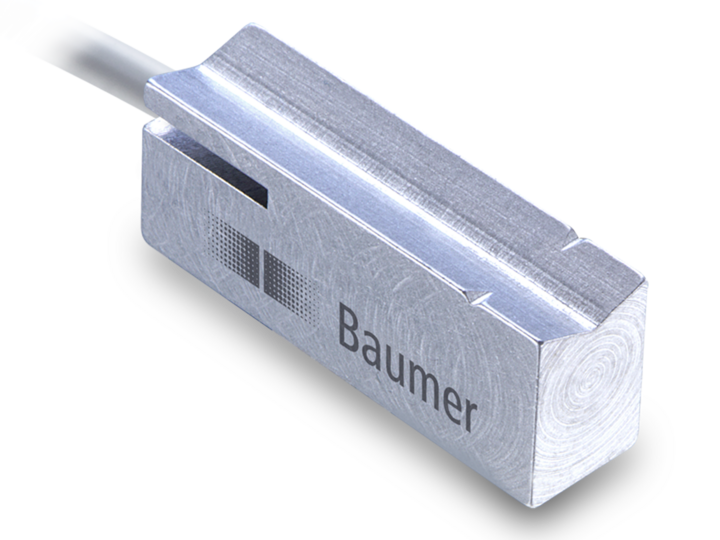Magnetic sensors
The magnetoresistive element is made of a specialized material which will only respond to magnetic fields, such as generated by a permanent magnet, by outputting a digital signal. Capable of detecting even very weak magnetic fields, the material is about ten times more sensitive than a Hall element and thus allows for substantially extended sensing distances. Magnetoresistive proximity switches are omnipolar and therefore capable of detecting both north and southpole of the permanent magnet.
Magnetic cylinder sensors
The piston inside the cylinder carries a permanent magnet which builds a magnetic field to penetrate all non-ferromagnetic materials. The sensor is tripped when detecting the magnetic field. To mount the sensor it is introduced in the slot provided at the cylinder and secured. By aid of clamps and bolts available as accessories, cylinder sensors can be attached to all conventional cylinders.




